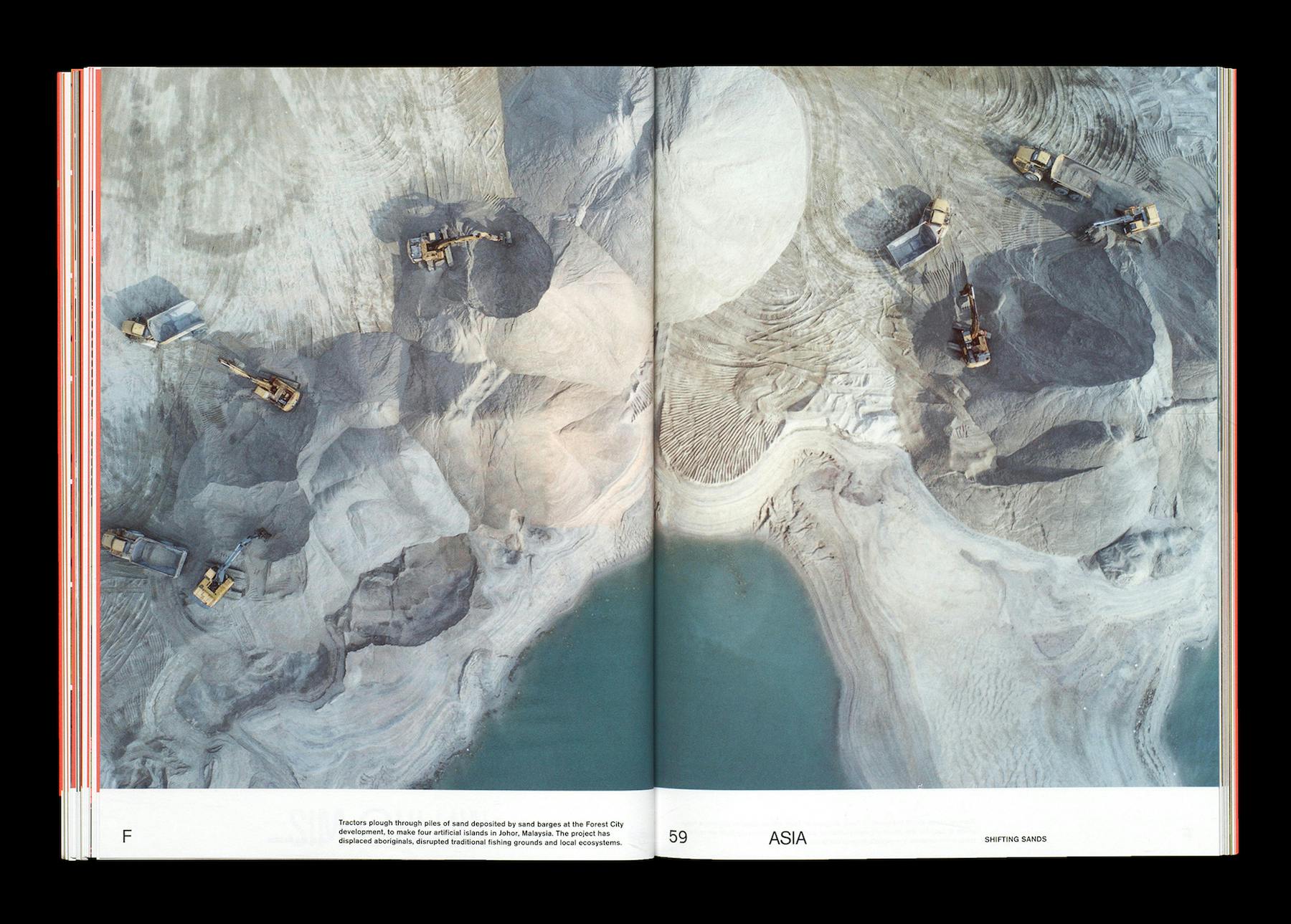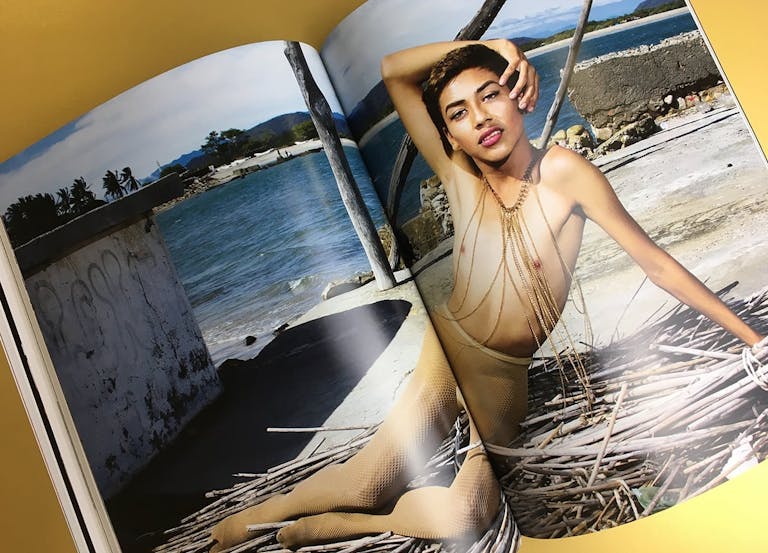Migrant Journal offers readers a microscopic take on the bigger picture
Migrant Journal has long been a favourite here at Stack. Highly and deservedly commended at the Stack Awards in multiple categories, editor Justinien Tribillon and his team have created an aesthetically and intellectually ambitious magazine that bewilders and beguiles in equal measure. And, in that regard, issue five is no different.
Migrant’s fifth offering, which also happens to be its penultimate one, is dedicated to exploring the ‘Micro Odyssey.’ From microbiology to aerial photography, new technologies to the surprising (and surprisingly fascinating) lifecycle of sand, Migrant No. 5 is a laser-focused look at the bigger picture: the world, and the complexity of its movements, in microcosm.
Covering everything from botany to Bruce Willis, we asked Justinien to guide us through the intricacies of the ‘Micro Odyssey.’
1. It shouldn’t make sense
When you first hear about the theme of a new issue of Migrant Journal it shouldn’t make sense. Hopefully the reader, contributor or editor’s first reactions should be: “What the fuck?” It needs some thinking, some introspection, adaptation and a dash of leap-of-faith kind of love.
Our last issue, No. 5: “Micro Odysseys,” looks at the very small. The idea of a “nano” issue had been floating around for some time, but it lacked coherence and conceptualisation – until we worked on our call and started receiving the first proposals. Hopefully, when the readers now open our “orange” issue, it will all come together. From diseases to seeds, protons to bacteria — the whole approach framed by a combination of neon-orange and glaucous metallic yellow.
2. Strictly come dancing
The issue opens with a piece on shooting stars. Because stars are the most mythical and sometimes microscopical travellers of all. They arrive from the depth of the universe, sometimes big enough to destroy our way of life (metaphorical alert), otherwise microscopic but carrying unknown diseases (re-metaphorical alert). Usually Bruce Willis, lately Natalie Portman, are here to save us though, so it’s all fine.
Design researcher Bethany Rigby has looked at shooting stars, their cultural meanings, and how a Japanese company is in good position to recreate them on-demand, in order to deliver ballets of stars dancing in the skies: available for birthdays, weddings and bar-mitzvahs.
3. Clover and fern
Old stuff doesn’t necessary mean stuffy.
We propose a new translation of a 150-year-old geography text. Not convinced yet? Its “modernity” is so striking, it feels it was written yesterday tomorrow. Elisée Reclus was a French geographer (1830-1905) who spent most of his life abroad, exiled for his virulent anarchist activity: among other feats, he was captured while defending, rifle in hands, the Paris Commune of 1871. In this 1868 text, he links colonisation, the impact of mankind’s activity on the environment and migration of seeds in a surprising and fascinating essay.
4. Our first plant-based whodunnit
In botany, a plant species is considered “neophyte” if it is not “native” to a region and was introduced “recently.” The reason why I’m using all these annoying “quotation marks” is because in Europe, all plant species introduced after 1492 (when Christopher Columbus established a link between Europe and the Americas) are considered “neophyte.” A new perspective on “recent history,” no?
This is an opportunity for Migrant Journal’s first whodunnit: researcher and writer Crystal Bennes follows an urban legend, one that tells the story of a famous Danish sculptor moving back to his country after spending thirty years working in Rome. The hay used to protect the sculptures in the crate which landed in Copenhagen in 1838 (did you know bubble wrap was invented in 1960?) was discarded in the museum courtyard and started spreading, growing, migrating, making the Danish landscape more Roman day by day.
But then, what is factual truth and what is legend in this beautiful story? Read and find out.
5. Singapore’s migrating sands
Besides commissioning illustrators to interpret the articles we publish and to draw our back covers, we also publish a photo essay selected by our art directors Offshore Studio. In this issue, we’ve worked with Magnum photographer Sim Chi Yin to publish photographs of one of her ongoing projects: Shifting sands.
Sand is now one of the most precious commodities of our time: it is essential to make concrete, alongside other ingredients such as cement, gravel and water. It’s literally the fundament of urbanisation, and as such has become the most traded natural resource after water. The commerce and migration of sand to support growth in certain parts of the world threatens lifestyles and ecologies of their neighbouring countries. This is the aberration of sand migration that Chi Yin captures in this beautiful project published in Migrant Journal No. 5 ‘Micro Odysseys’.
Check out the call for proposals for Migrant’s final issue: MJ No. 6 ‘Foreign Agents’. Deadline 1 December.













